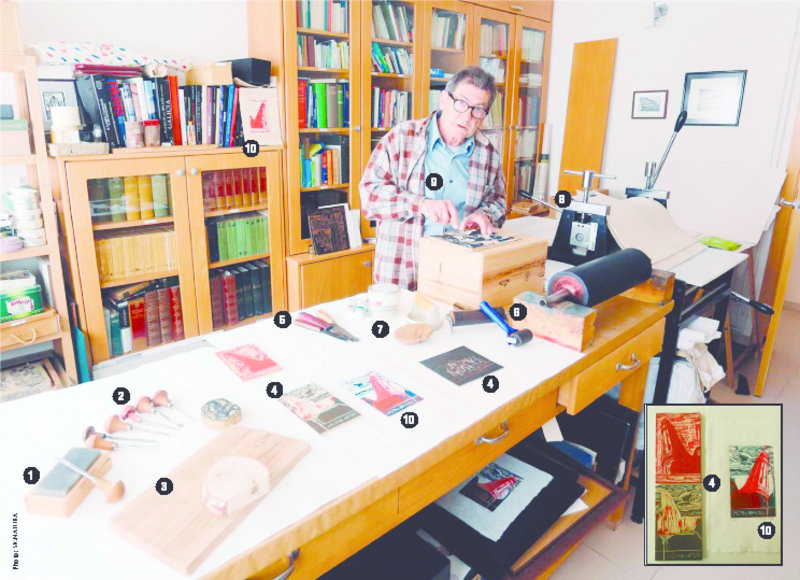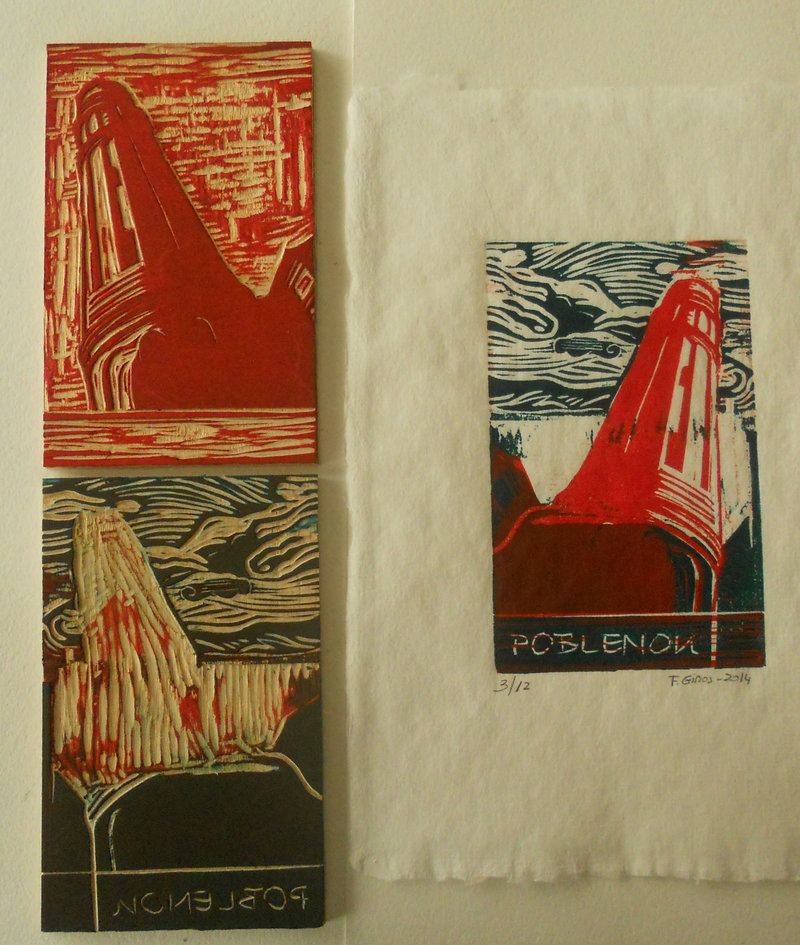Xylographer
Frederic Girós
Self-taught, Frederic has practiced the art of xylography, or woodcutting, since 1999 and is recognised as an artisan by the Generalitat de Catalunya. He has made around 200 xylographs, including bookplates and artistic books and has exhibited in Mexico as well as Catalonia. He lives in Gaüses, a small village in the Empordà, part of the town of Vilopriu. The woodcutter crafts out a pattern he has previously drawn onto the wood which will eventually be used as a printing plate.
The tradition and methods go back centuries and were first found in northern Europe where the trade became popular with the advent of the paper. Often it was used to create religious books. It regained popularity at the beginning of the 20th century with bookplates and ex libris by artists such as Riquer, Ricart, and Oriol Divine.
1. Arkansas whetting stone: For sharpening the gouges and chisels. It is a delicate operation.
2. Gouges and chisels: Various styles (“V”, “U ...) and sizes. All of them used to notch and carve the wood and wood and achieve different textures and lines.
3. Woods: Of varying qualities which are well sanded. For its hardness and detail, boxwood. Rollers are used to sand evenly.
4. The finished plates: These are the finished wooden plates which are used to transfer my creation onto the printable surface.
5. Spatulas: I use these to extract the ink and place it on the stone or glass for the rollers.
6. Rollers: to evenly spread the ink on the wood matrix which is then transferred to the paper. The ink covers the surface of the matrix is not waisted and penetrates the etching.
7. Manual press: The transfer of the ink onto the paper (printing) can be manual or mechanical. In the first case a manual press is used to place the paper against the inked matrix and get the imprint
8. Mechanical press: Mechanical pressure replaces manual pressure which now becomes uniform.
9. Inks and dyes: For woodcut inks commonly used for fresh wood are engraver's ink or lithographic inks, which can be either oil or water based.
10. Engravings. The stamp is the result of the process of engraving an image on paper which was etched wood. Since its inception woodcutting was used primarily for creating religious images, we often use the word with religious connotations, but in fact that is only part of it. The wood of the cheery tree is much appreciated.




